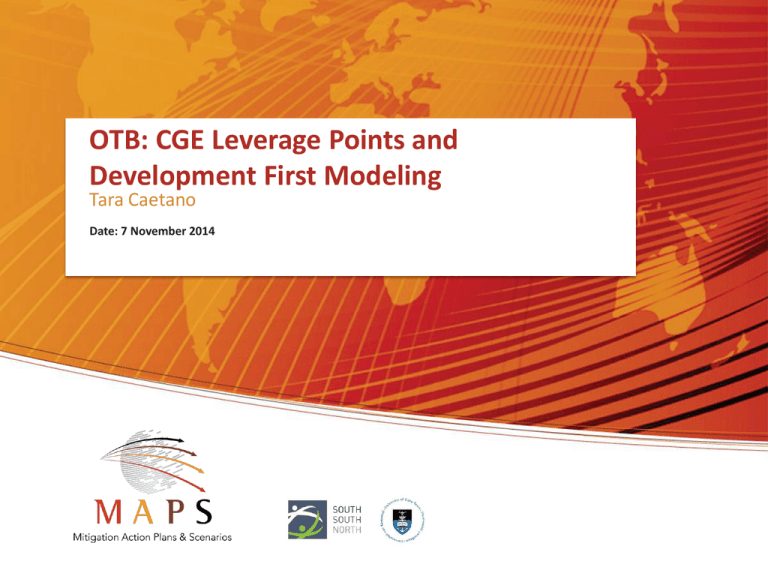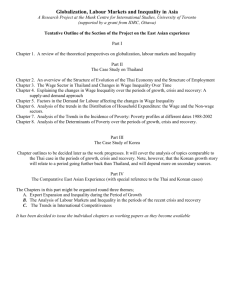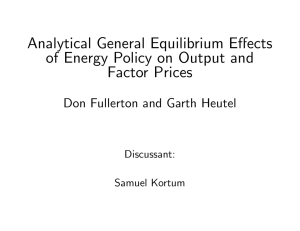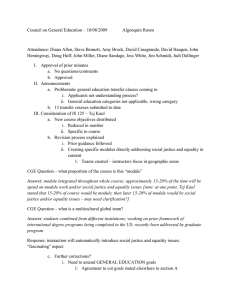OTB – Leverage Points and Model Development
advertisement

OTB: CGE Leverage Points and Development First Modeling Tara Caetano Date: 7 November 2014 Leverage Points – Quantifying Uncertainty Identifying the way that assumptions we make in the model affect the results First step to quantifying the uncertainties in long term CGE modeling Main leverage points: Three arms that determine GDP: TFP; investment share of savings; population growth (labour supply) Elasticities (substitution, trade, income, production) World prices Foreign savings Others (government consumption adjustment factor, wage distortion factor, direct tax scaling factor) Development-First Baseline Calibrating a baseline that is more inline with our development goals Similar to the Brazilian reference case Crude method of ensuring development first All households above the poverty line by 2050 An increase in employment over the period (?) Reduction in inequality Introducing mitigation actions as scenarios How do these impact our development-driven economy? Can we achieve carbon reductions whilst maintaining development? Employment, employment, employment South Africa has an official unemployment rate of 24.7% Youth unemployment between 40% and 50% Focus on growth: belief that it will generate employment Trends have shown that growth has led to carbon intensive, capital intensive growth in South Africa – not driving employment How do we generate demand for labour in SA? - No silver bullet Market rigidities are a barrier for employment Education, training and skills development Explore the methods for capturing employment in the CGE Equilibrating assumptions are limiting (Employment Wages/adjusting TFPs) Role of micro-simulations? Linked Model Development A number of technical aspects that need to be addressed: Syncing emissions Looking deeper into electricity price changes in the linked model Assisting with the linking of other sectors in SATIM-e-SAGE Furthering the work done on employment and inequality Future Work Developing the current linked model to better capture the labour market, household behaviour and inequality Micro-simulation? Including different indicators to capture better standards of living Including the informal sector A comparative analysis of the impacts of mitigation actions on inequality in Brazil and South Africa Interesting case given the development synergies and the difference in climate problems Two country comparison can be taken forward to compare all MAPS countries











